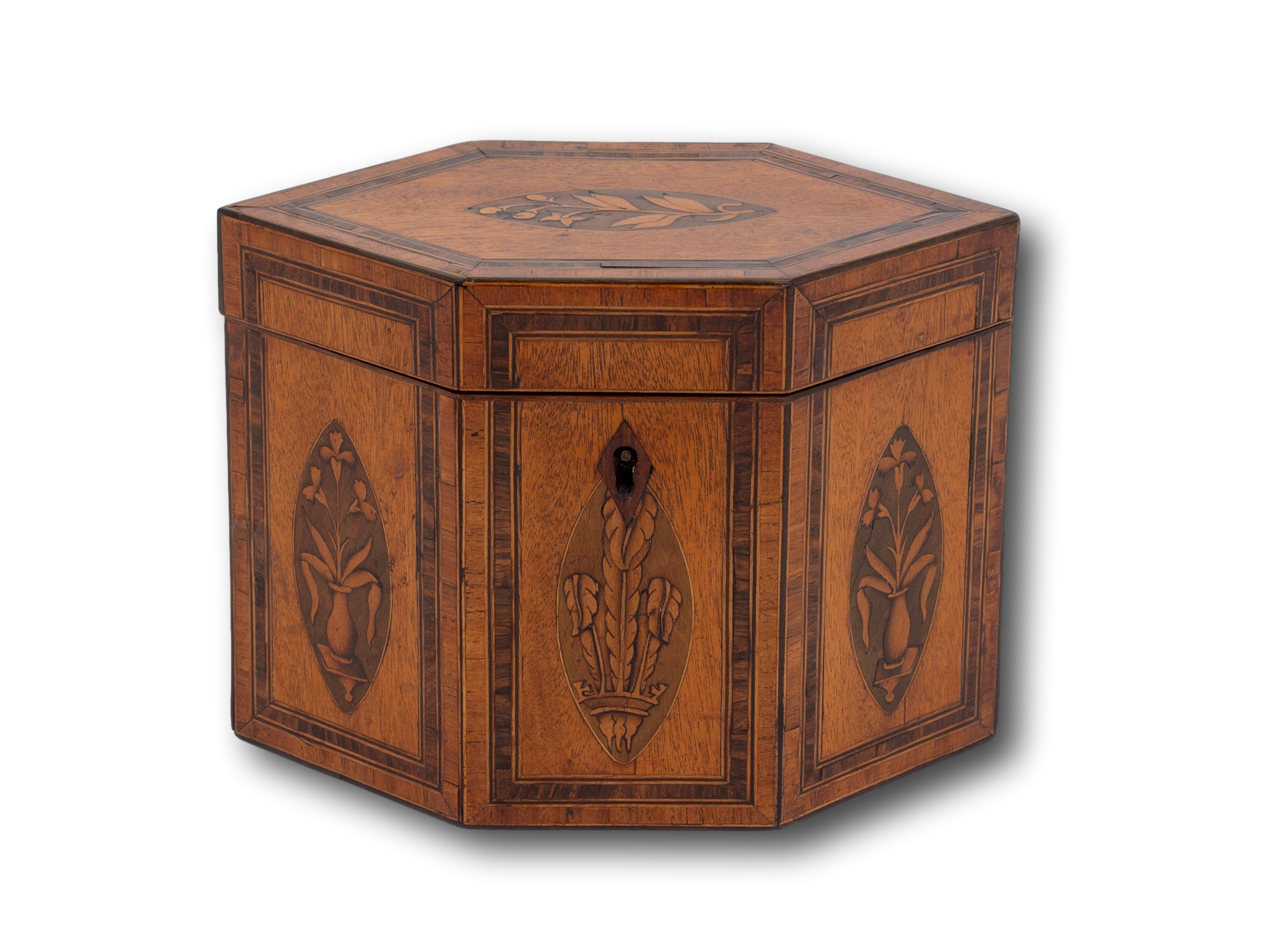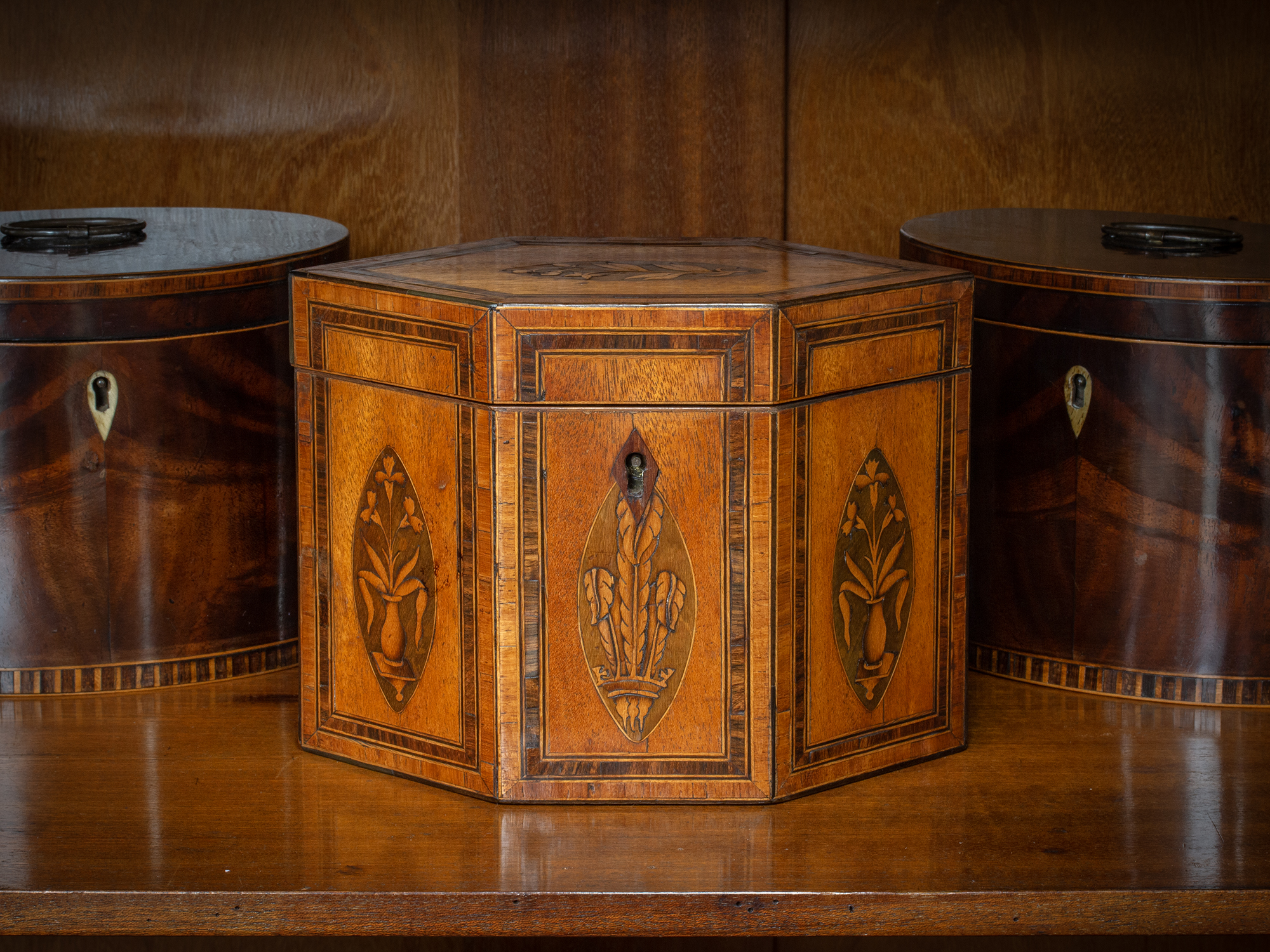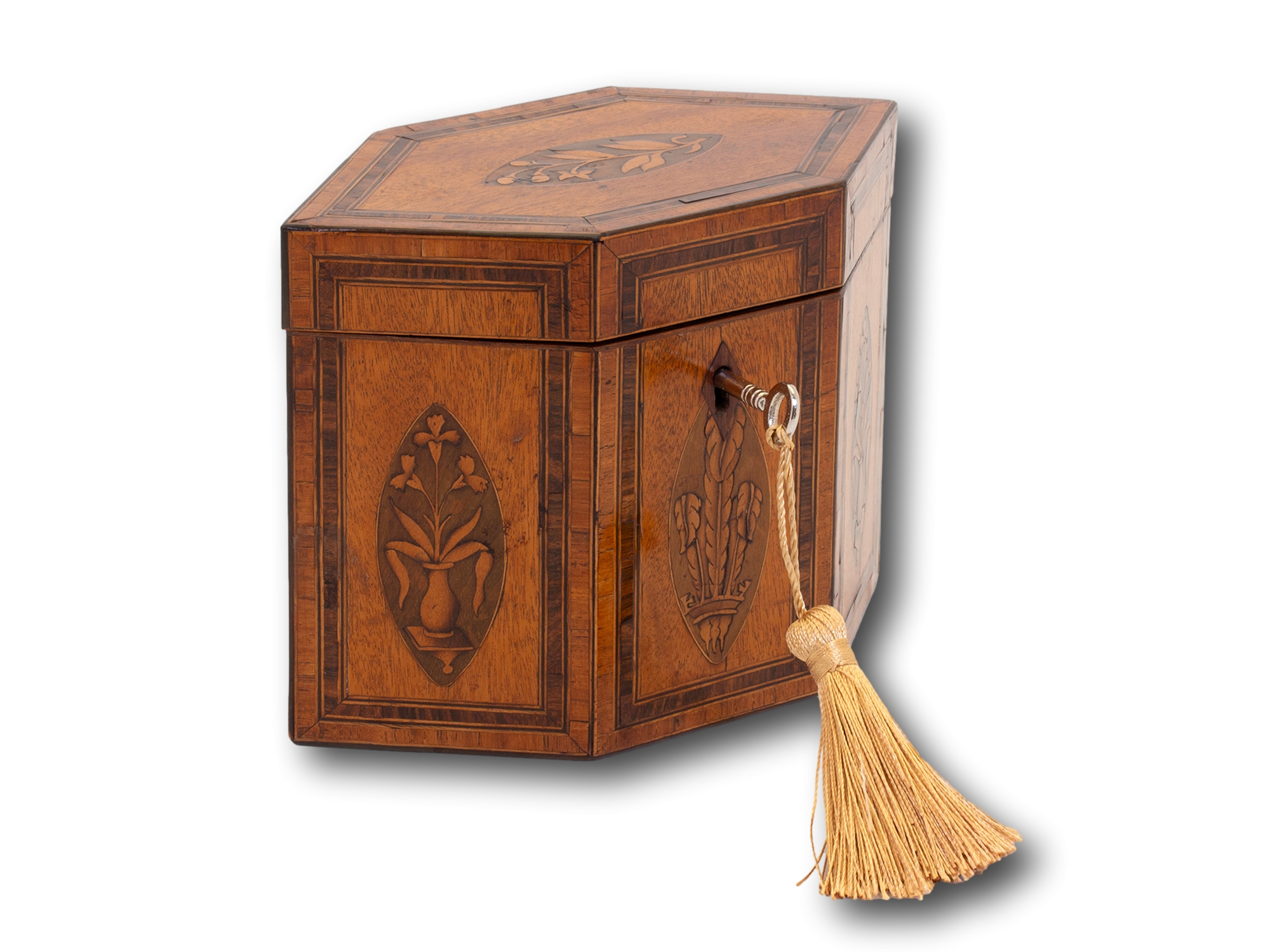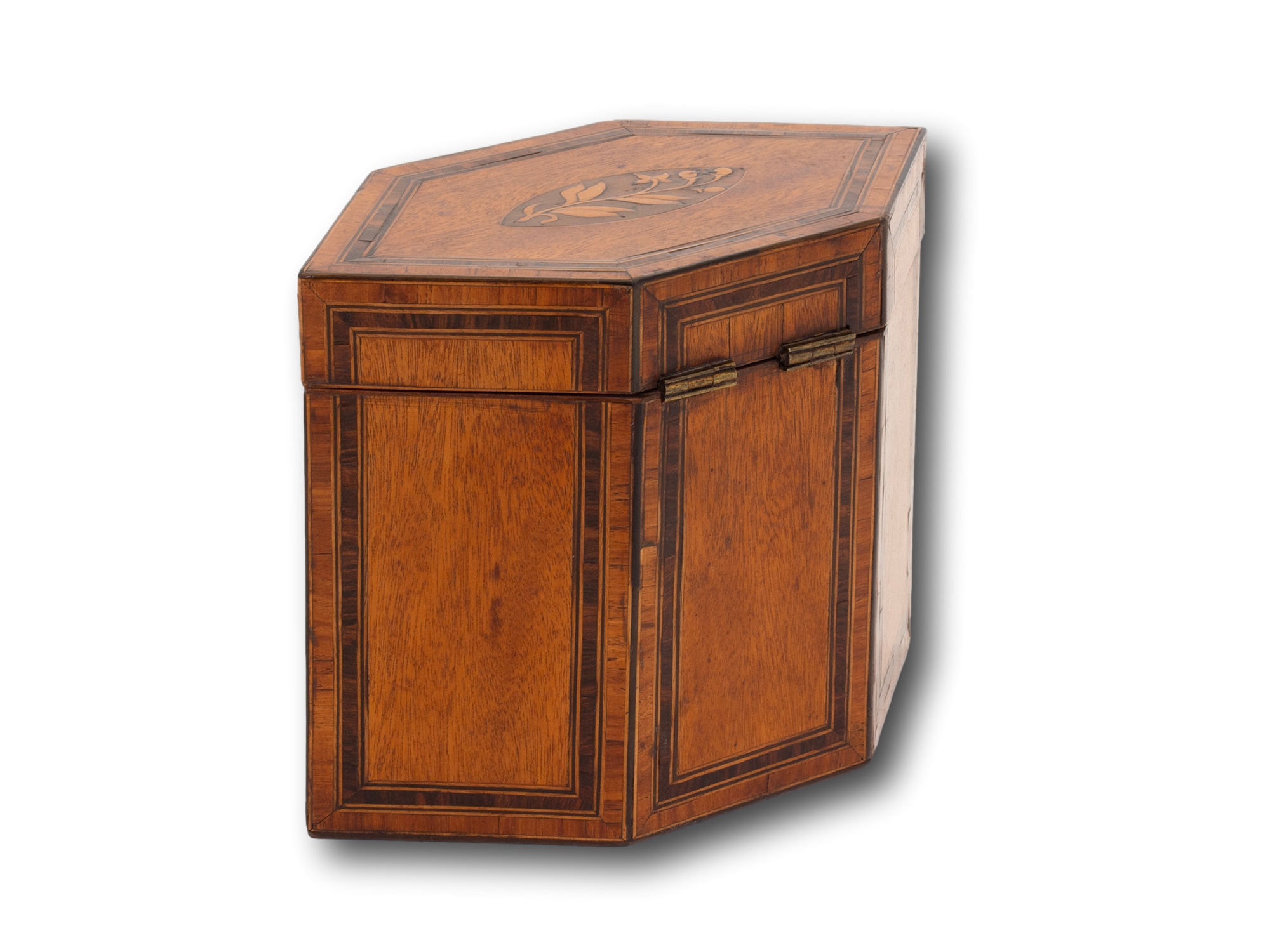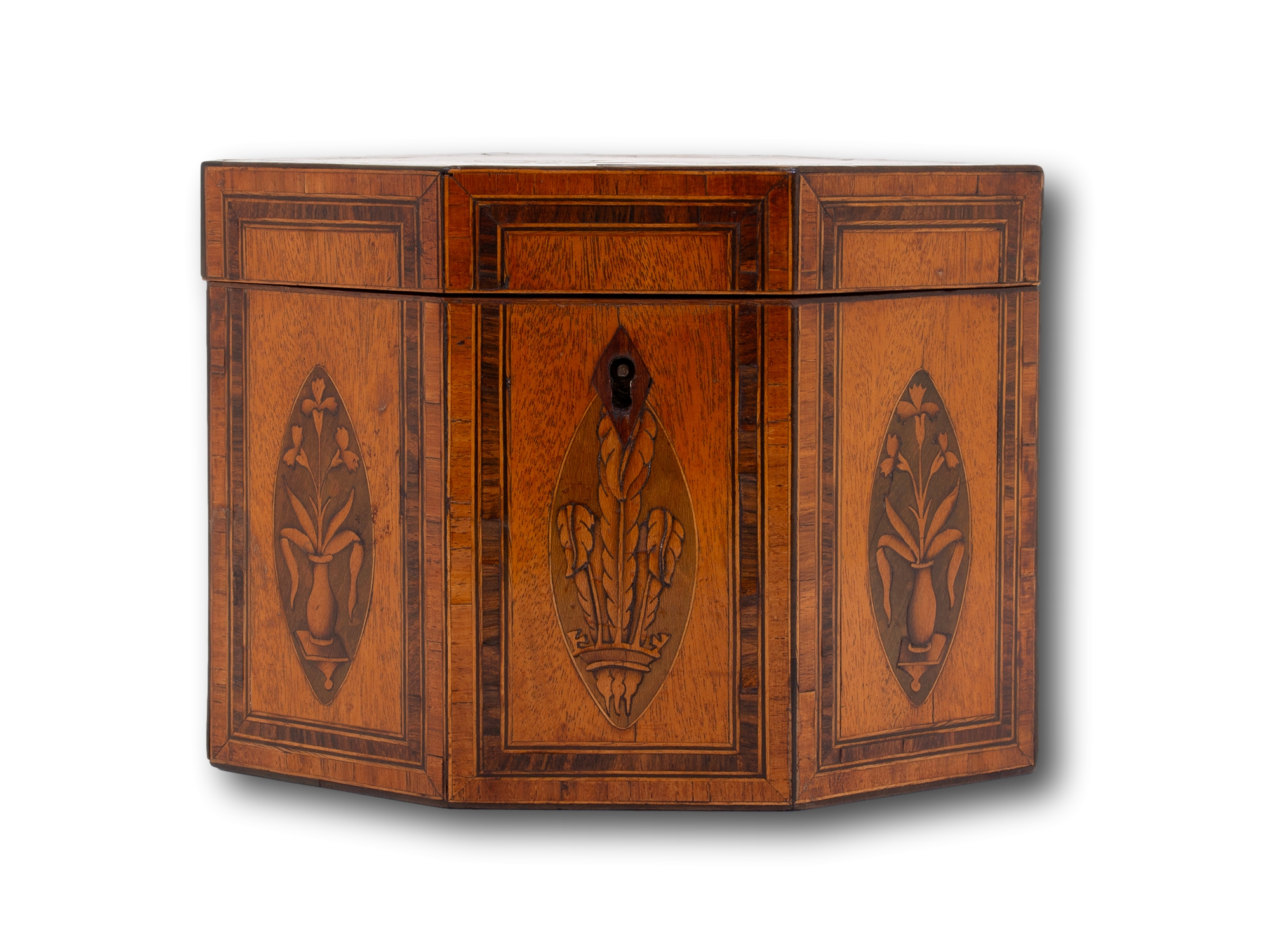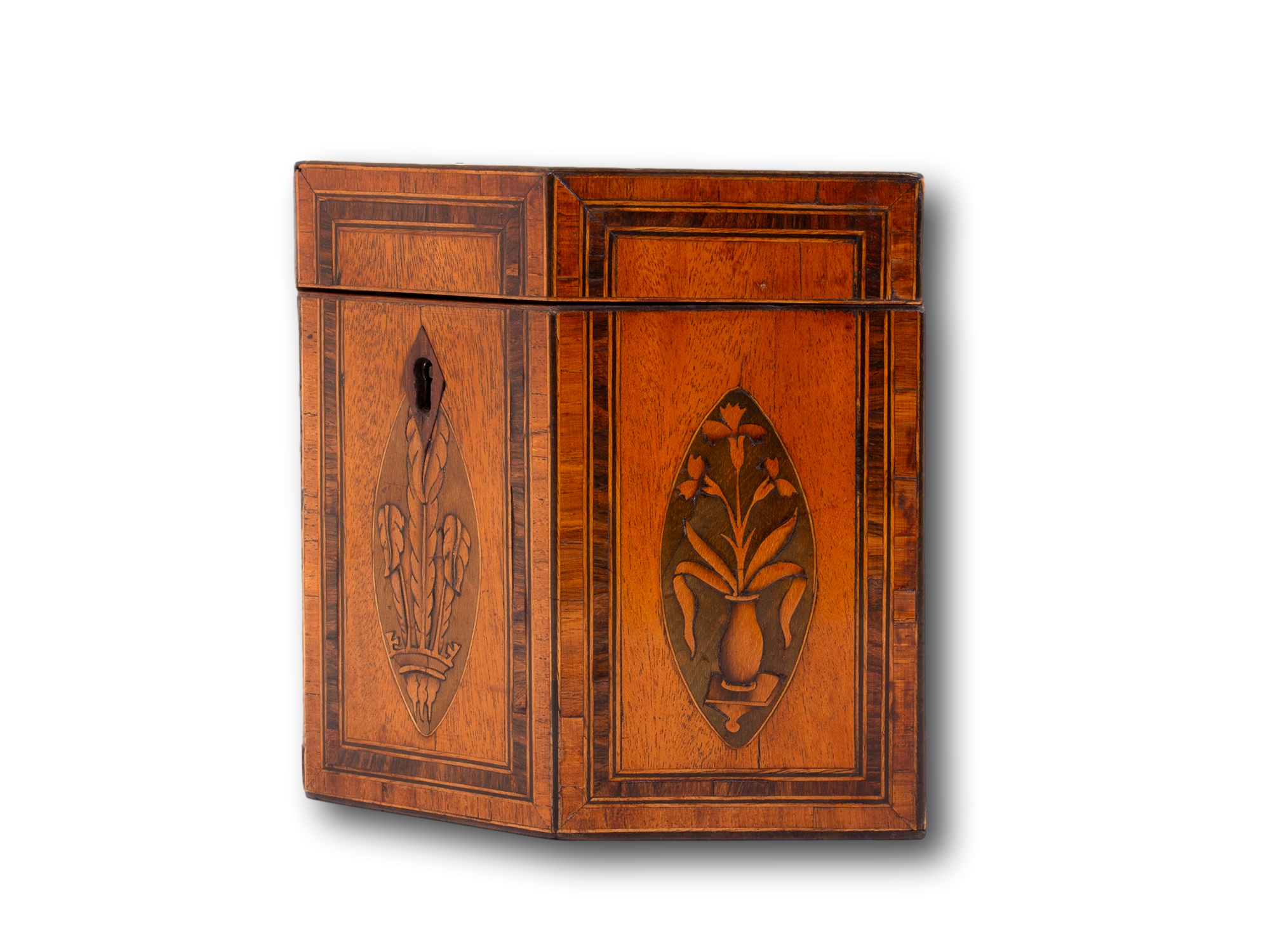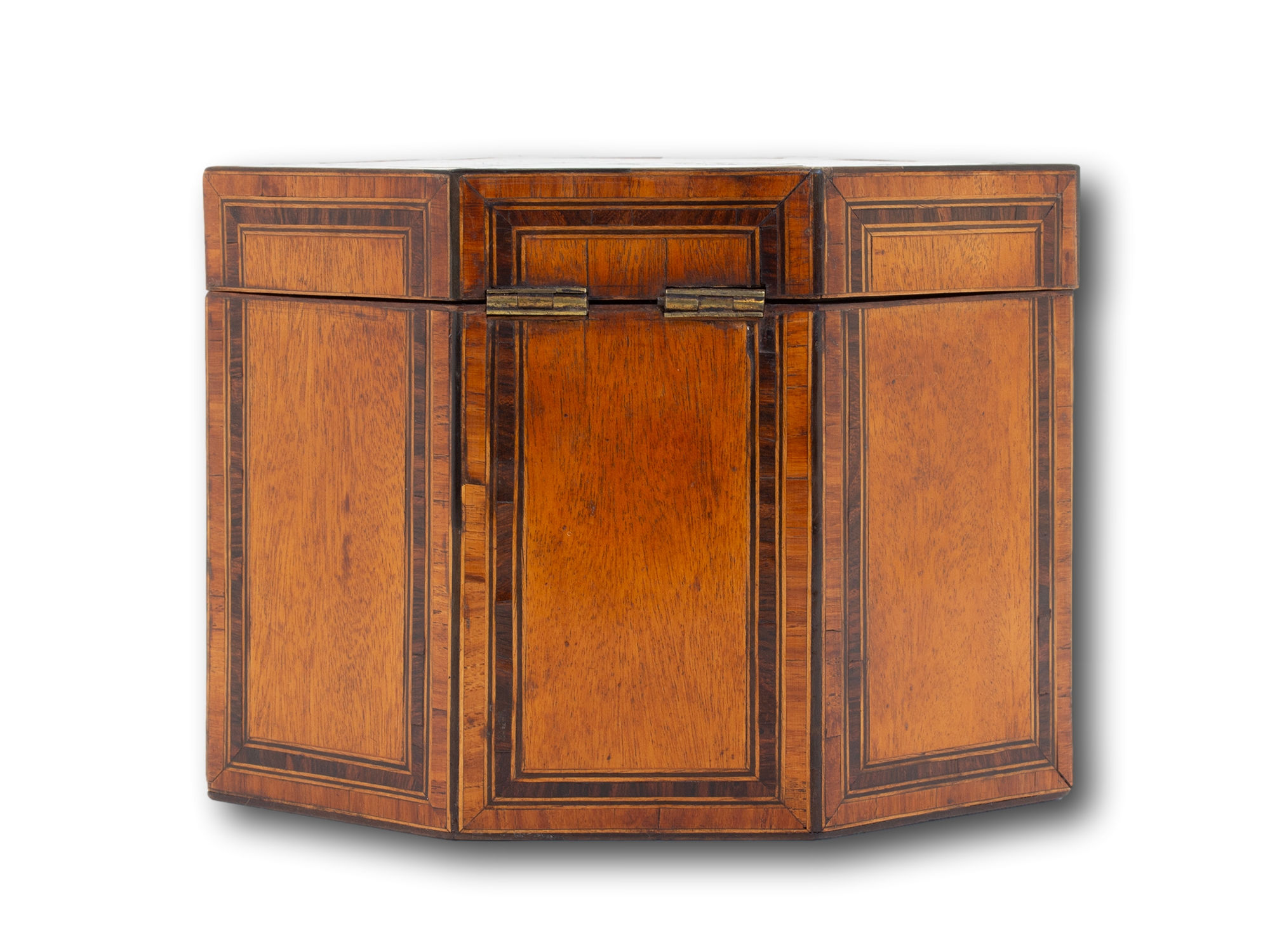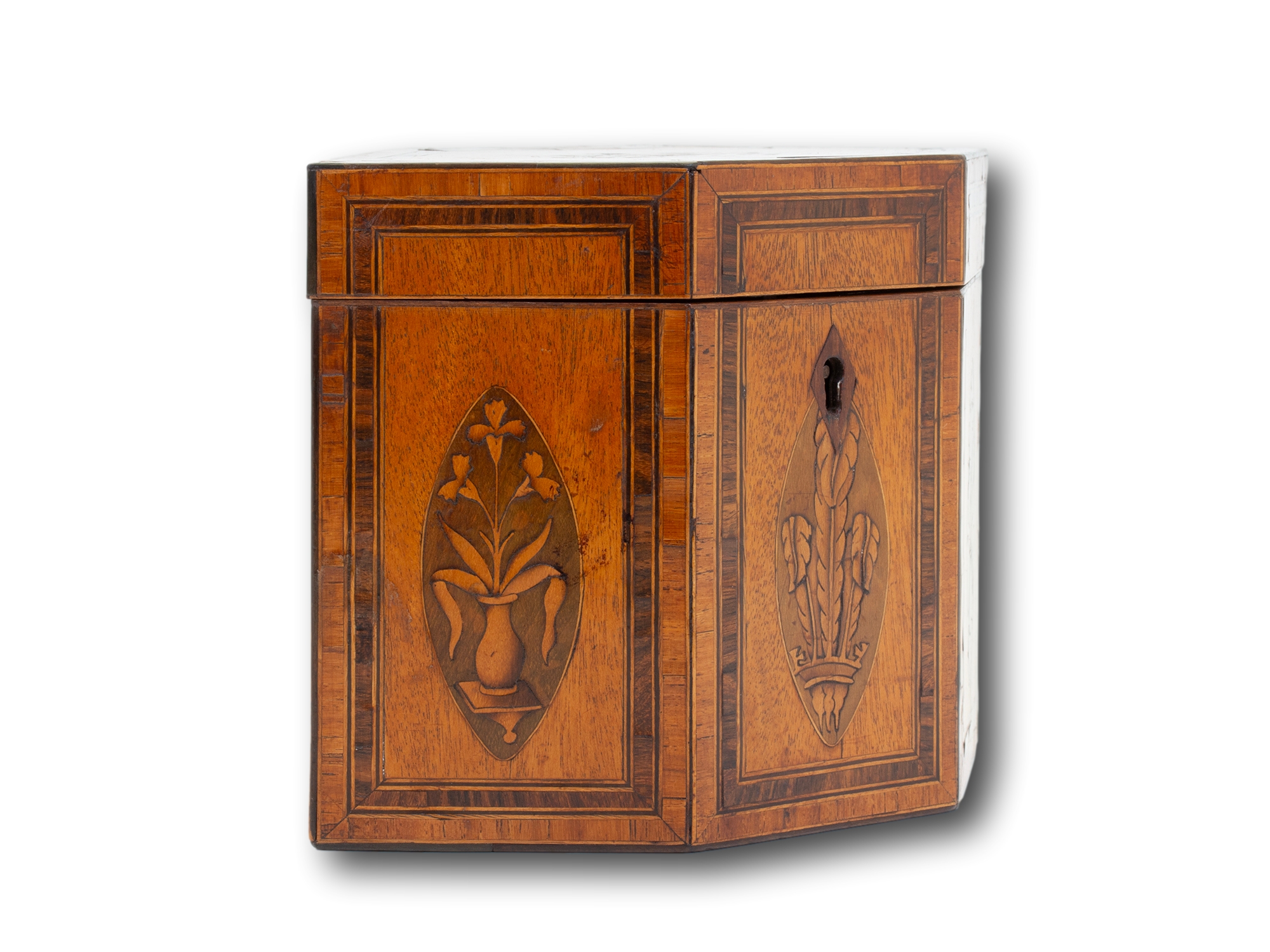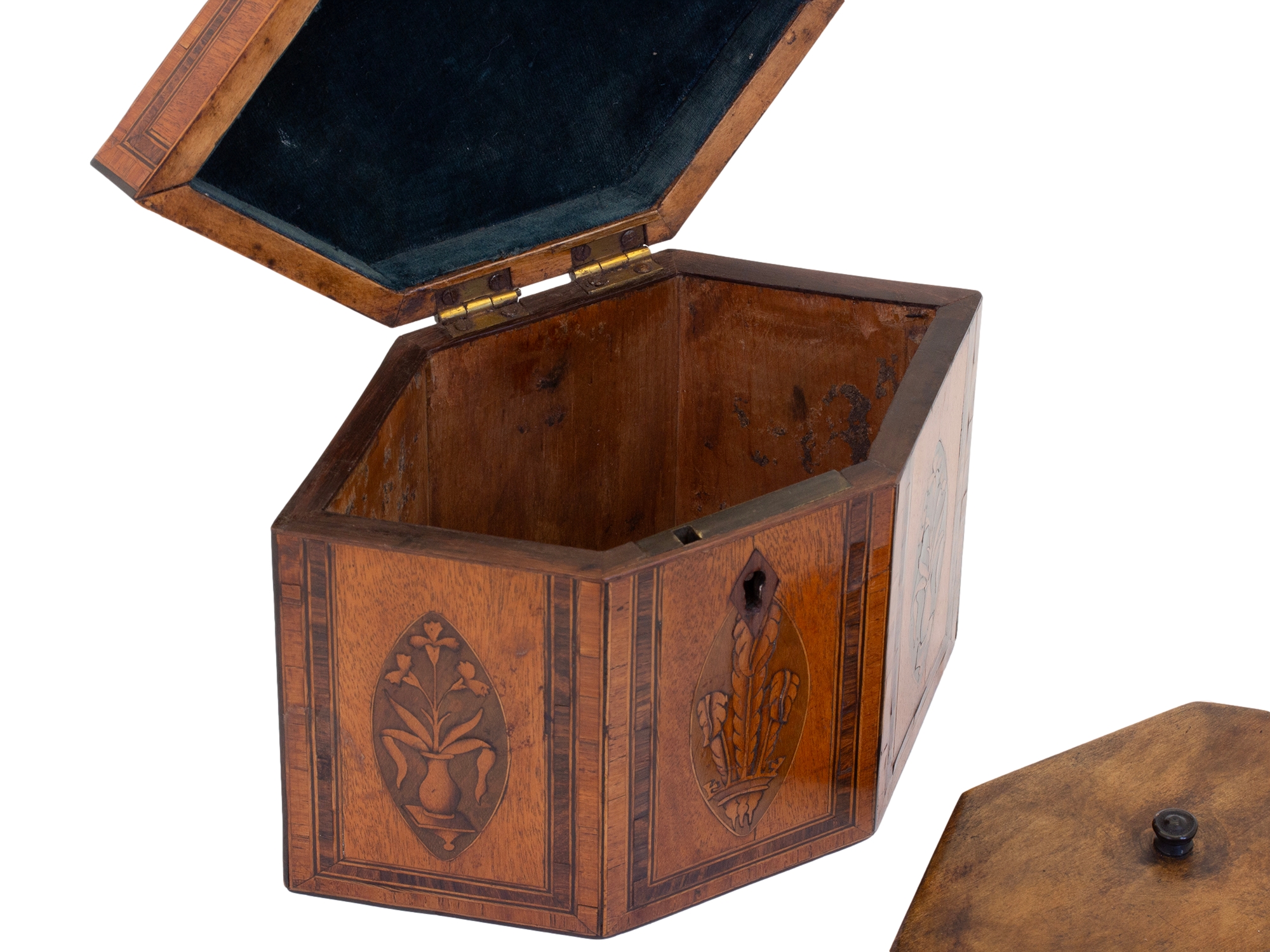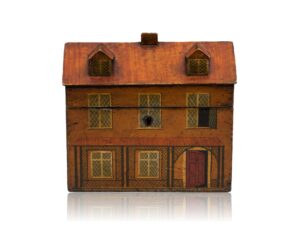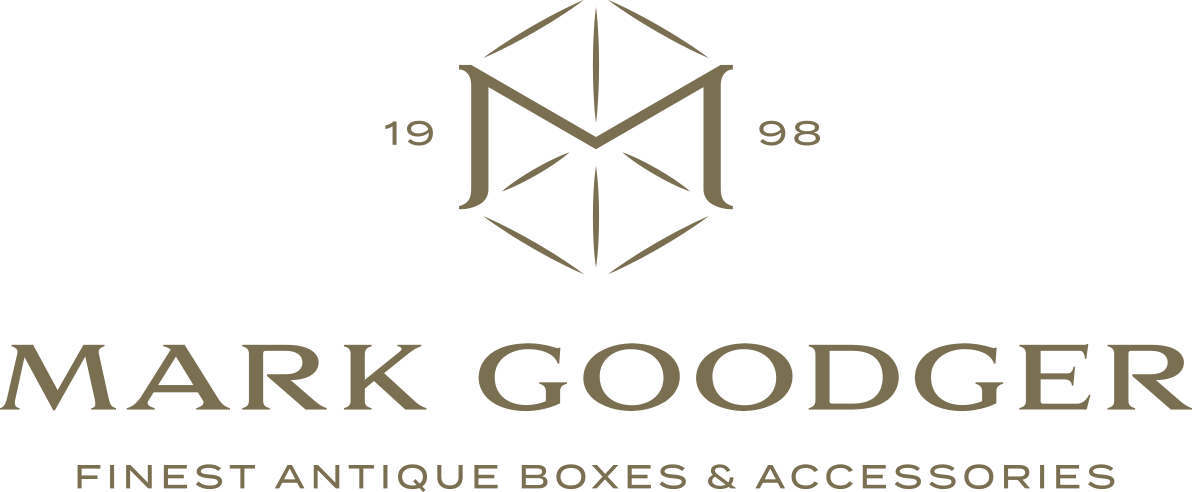Antique Satinwood Tea Caddy
£1,495.00
Prince of Wales Feathers From our Tea Caddy collection, we are delighted to offer this Antique Satinwood Tea Caddy. The Tea Caddy of elongated hexagonal form edged in Ebony with delicately inlaid panels featuring the Prince of Wales feathers to... Read More
George III Circa 1790

| Dimensions | 18 × 9.5 × 13 cm |
|---|---|
| Country | |
| Medium | |
| Period | |
| Year | |
| SKU | 501486-TPCE |
Description
Description
Prince of Wales Feathers
From our Tea Caddy collection, we are delighted to offer this Antique Satinwood Tea Caddy. The Tea Caddy of elongated hexagonal form edged in Ebony with delicately inlaid panels featuring the Prince of Wales feathers to the front center and two vases with blossoming Tea plants to the front outside panels. Each panel has a layer of Kingwood cross banding, Boxwood stringing and Tulipwood cross banding framing the inlaid scenes. The exterior of the Tea Caddy is finished with a floral inlay to the lid and a diamond shaped escutcheon. The interior of the Tea Caddy is fitted with a hexagonal lid with turned handle and still has traces of the original silver foil lining. The Tea Caddy dates to the Georgian period and late 18th century George III period circa 1790.
The Antique Hexagonal Satinwood Tea Caddy comes complete with a working lock and key.
Measurements (inches) 5 x 7 x 3.75
Prince of Wales’s feathers, the emblem of the Prince of Wales known as a heraldic badge. It consists of three white ostrich feathers emerging from a gold coronet. As well as being used in royal heraldry, the badge is sometimes used to symbolise Wales, particularly in Welsh rugby union and Welsh regiments of the British Army.
Georgian era was a period in British history dating from 1714-1837, the Georgian era after the Hanoverian kings George I, George II, George III and George IV.
Satinwood is found in India and Sri Lanka. It has a rich golden colour and an almost reflective sheen. Satinwood is traditionally used for high quality furniture.
Kingwood also known as Violetwood, is found in South America and is violet-brown in colour with a darker grain. It is a very dense and hard wood that is only available for smaller items due to the small tree that yields it.
Tulipwood is also known as Brazilian Tulipwood, Brazilian Pinkwood and Bahia Rosewood. It is found in South America, mainly Brazil. The colour is a warm yellow with streaks or brown-red grain.
Boxwood can be found in Europe, Northwest Africa and Southwest Asia. It is a light cream that turns darker to brown when exposed to light. The trees are very small, which is suited to smaller projects like edging or inlay instead of veneers.
Ebony is often almost completely black with very little visible grain often with a subtle red/purple hue. This wood is very expensive due to the slow-growing trees which can often be gnarly affecting the yield of straight workable wood. Most ebonies are very dense making work with hand tools very difficult and can quickly clunt cutting tools. This density however offers an excellent finish on turned items.
With every purchase from Mark Goodger Antiques, you will receive our latest catalogue, a Certificate of Authenticity, detailed care instructions for your chosen piece and an independent invoice (for insurance purposes) will be enclosed. As well as being protected by a no-hassle, money-back policy, your piece will be entirely insured during the shipping process to ensure the safety of your item.
Additional information
Additional information
| Dimensions | 18 × 9.5 × 13 cm |
|---|---|
| Country | |
| Medium | |
| Period | |
| Year | |
| SKU | 501486-TPCE |
